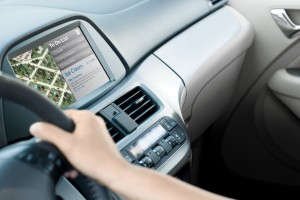Intel Drives In-Vehicle Innovation for the Internet of Things
Technology is evolving so rapidly it has become an integral component of everyday life. Having uninterrupted connectivity is a must—even while driving. In fact, analysts predict that by 2016 in-vehicle connectivity and basic online content will become critical buying factors in consumers’ car-buying decisions in mature markets[1]. This dramatic convergence of technology in the car is quickly making it a key device in the Internet of Things (IoT) with the ability to both receive data and feed it to the cloud, to the traffic infrastructure, to other vehicles and more. As a result, automakers are increasingly turning to leading technology companies such as Intel to explore new ways to inform, entertain and assist drivers to create a safer and more enjoyable driving experience.
Intel is Inside Your Car: Intel and Leading Automakers Enhance In-Vehicle Technologies
Intel is partnering with the automotive industry to apply its technology and expertise to the development of innovative applications, services and safety features, some of which already exist in today’s vehicles. With a mix of automotive, IT and consumer electronics expertise and research and development, Intel is helping automakers speed time-to-market, create new driving experiences, and more quickly adapt to changing consumer demand.

· Infiniti InTouch* Intel is powering the all-new Infiniti InTouch in-vehicle infotainment (IVI) system featured in the Infiniti Q50*. With Intel technology, the InTouch system has the processing performance to deliver a rich experience to the driver and passengers, such as high-end graphics on the touch-screen displays. The Infiniti InTouch system is the first system to feature the Intel logo on the start-up screen.
· BMW ConnectedDrive* Intel technology is used in BMW’s professional navigation system, part of BMW ConnectedDrive, for all its vehicle models, including the future iSeries models. With Intel technology, BMW ConnectedDrive has the processing performance to deliver a compelling experience to the driver and passengers, including a rich display screen interface and quicker response times when interacting with the applications, such as fast route calculation in complex navigation maps.
· Kia Motors Corporation* Intel is powering the in-vehicle infotainment (IVI) system available in the Kia K9 luxury sedan. The K9 IVI system is the first product deployment to be announced from the ongoing collaboration between Intel and Kia. It features dual independent displays, so drivers and passengers can enjoy desired content anywhere in the car.
· Jaguar Land Rover* Intel and Jaguar Land Rover are collaborating on research and product development for future IVI technologies. Additionally, there is a close, collaborative relationship between Intel Labs and Jaguar Land Rover’s research facility in Portland, Ore., that is facilitating joint research projects on next-generation digital vehicle prototypes with in-vehicle experiences that connect the car to devices and the cloud.
· Toyota Motor Company* Intel and Toyota are working together to define next-generation IVI systems that will enable new usage models for mobile device connectivity in the car. Through this collaboration, the companies will focus research on developing a user interaction methodology including touch, gesture and voice technologies as well as information management for the driver.

Investing in Future Experiences for Drivers
Intel is making significant investments in automotive engineering capabilities, ecosystem alignment and research to help automakers create new driving experiences that will inform, assist, and entertain drivers safely and efficiently. These investments help drive faster time-to-market and will enable tomorrow’s innovative in-vehicle experiences.
· Intel Labs Automotive Research
Seasoned ethnographers and anthropologists at Intel Labs are working on a variety of projects aimed at making roads safer and gaining knowledge about the safest and most intuitive way for drivers to interact with their vehicles. Advanced sensing, computation and interconnected data will have revolutionary changes on the way people travel with their cars and with each other. Research and technology developed across Intel Labs explores how to enable these new experiences, in which cars will know and adapt to their owners, ease the burden of driving and help people get to their destinations more safely.
· Automotive Innovation and Product Development Center Located in Karlsruhe, Germany, the Center serves as Intel’s global center of competence for the development of products and technologies for IVI and telematics solutions. At the Center, a team of experts in automotive hardware and software engineering is optimizing Intel technologies for applications and services as well as capabilities for consumer electronics integration, performance optimization and system design.
· Intel Capital $100 Million Connected Car Fund The Intel Capital Connected Car Fund aims to accelerate the seamless connection between the vehicle and consumer electronic devices as well as drive new in-vehicle applications, services and differentiated user experiences based on Intel technologies. Through the fund, Intel Capital is investing in hardware, software and services companies that are developing leading-edge ingredient technology and platform capabilities that support Intel’s focus areas in automotive. Investments and activities to date include companies with competencies in Advanced Driver Assistance Systems (ADAS), human-machine interface, telematics and cloud services.
· Open Source Development Intel is actively involved in the GENIVI Alliance, a non-profit industry alliance committed to driving the broad adoption of an IVI open source development platform. Intel is also an active contributor to Tizen IVI, an open platform designed specifically for the automotive market, alongside various automakers and automotive suppliers. The effort aims to accelerate open innovation, facilitate differentiation, and enable common frameworks to lower the cost of software integration and speed time to market of new services.

Recent Comments